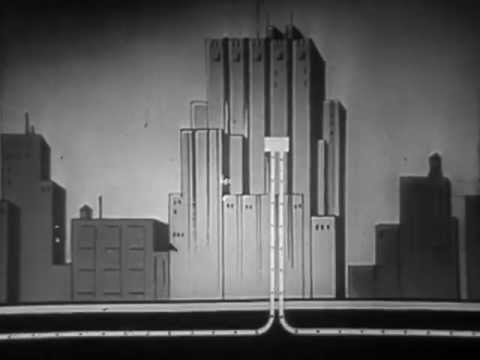

How Television Goes From Coast To Coast…The 1949 Version
How Television Goes From Coast To Coast…The 1949 Version
Before I get too far along, I wanted to mention that at the start of this, and again, scattered throughout, we get a rare look inside at what I think is NBC Studio 8G in action. This would have been shot not long after 8G was dedicated on April 22, 1948.
In today’s post just before this one, we celebrated America’s first coast to coast television broadcast of September 4, 1951. When this AT&T film was made in 1949, the network lines only went as far west as Chicago but in early 1950 went to St. Louis.
This is full of very interesting information on the coaxial cables and systems of the day and at around the 6 minute mark, we get into how AT&T handled the microwave part of broadcasting.
Many of today’s younger generation of broadcasters do not know that back in the early days, Ma Bell was in charge of long distance transmissions for both radio and television. They were as much a part of engineering and remote crews as the camera and audio men, because without the hookup, there was no show. Enjoy and share!
– Bobby Ellerbee
I hope Bobby doesn’t mind me mentioning this. I did an article on the history of AT&T’s transcontinental connection for my RetroTV blog a few months back. http://provideocoalition.com/pvcexclusive/story/live-from-coast-to-coast
I am amused by they claims that nothing happened to the broadcast in sight and sound. The switch from phone lines to satellite was very obvious through my viewing years. I really don’t know if this is a good example or not but the difference between the first Beatles appearance on SULLIVAN and the one in Miami. The distinct roll off of high frequencies in the sound starting at about 3 or 4k. While the ones from New York were crisp and bright. Typical of most phone line network sound. But most of you guy consider sound the red haired step child of video.
that is the National Radio “NR” building on Canal street it had no competition as a hub until the 80s…..
My wife’s Uncle, Harold Jury, won the Technical Emmy in 1949 for sync. That is all!
The “technicians” in the video are watching the image on the screen of an RCA monitor. The waveform screen is (mostly) shown blank. would they not be much more interested in the waveform, and would they really use RCA equipment rather than something fro WE?
I lived in Waukesha WI until 1960… I knew some how in 1957 watching Howdy Doody, I was going to end up with a career at NBC… I just knew it…
My first job in broadcasting, as far as I’m concerned, was with Michigan Bell in the Radio/TV control room. We took the video and program feeds from AT&T long lines on the 8th floor and distributed them to the local radio and TV stations from the 11th floor. We had 96 Macintosh tube amplifiers with attached Western Electric equalizer for audio and close to forty tube video amplifiers. The video was distributed on balanced 124 Ohm cable which was two coax cable i tied together in a shield (the transmission was between the two center conductors). We had cables to all stations Nd to the various origination venues. We also had a plexiglass round room on the very top of the 20 plus story Bell building with microwave for remotes such as the the PGA and the Thanksgiving Day parades. We didn’t have a clear shot for the parade so it was bounced off the the side of the Penobscot building. The Radio Control,Room also handled ship to shore, ai to ground and mobile (the precursor to cell phone).
A tribute to the thousands of skilled technicians who made all this possible from beginning to end.
The artwork of the station in Milwaukee looks an awful lot like the front portion of the building WTMJ-TV is still in to this very day.
Looks like a young Jack Irving as the TD in Studio 8G.
I like the reference to all the people it took to make this work.